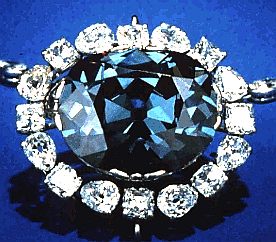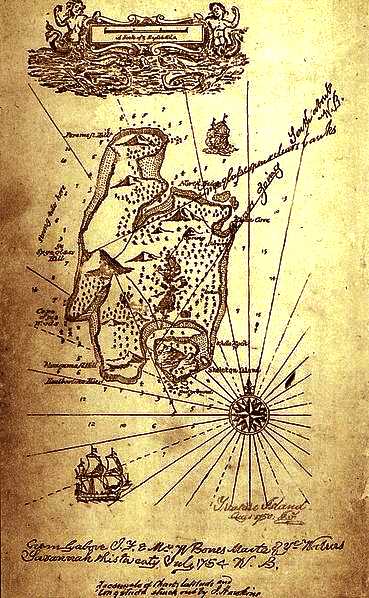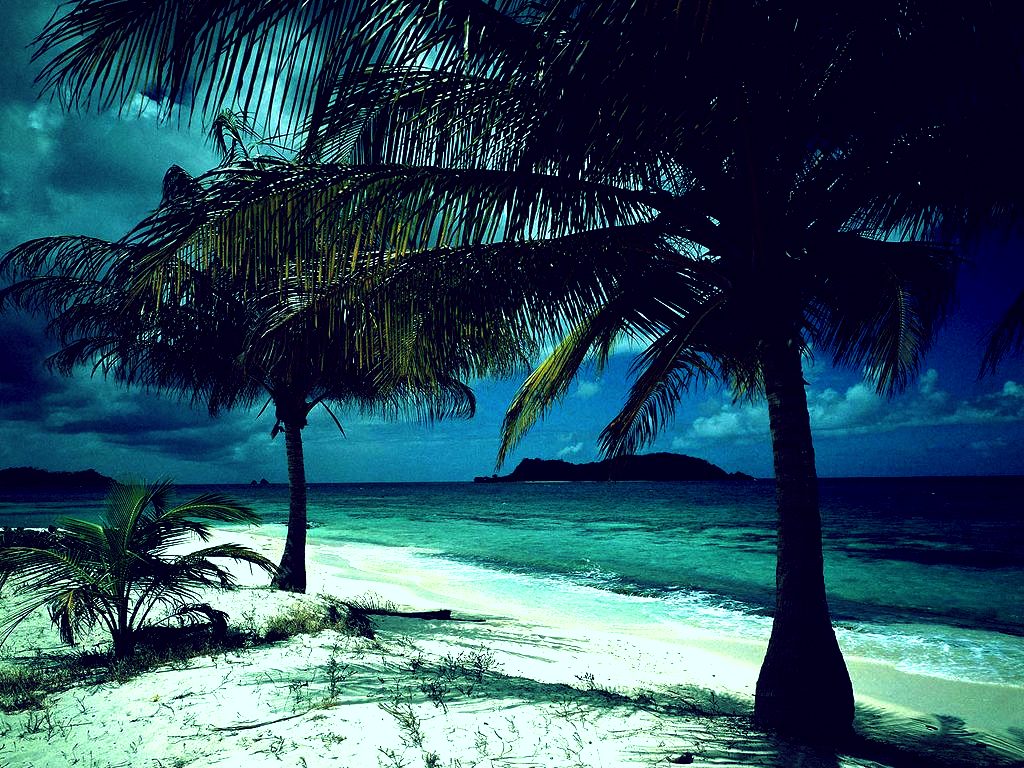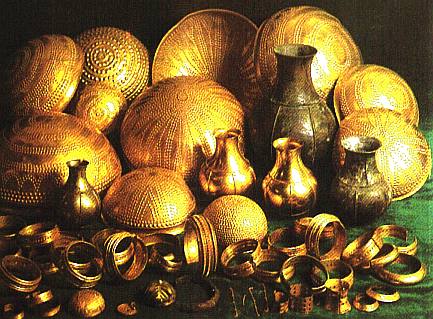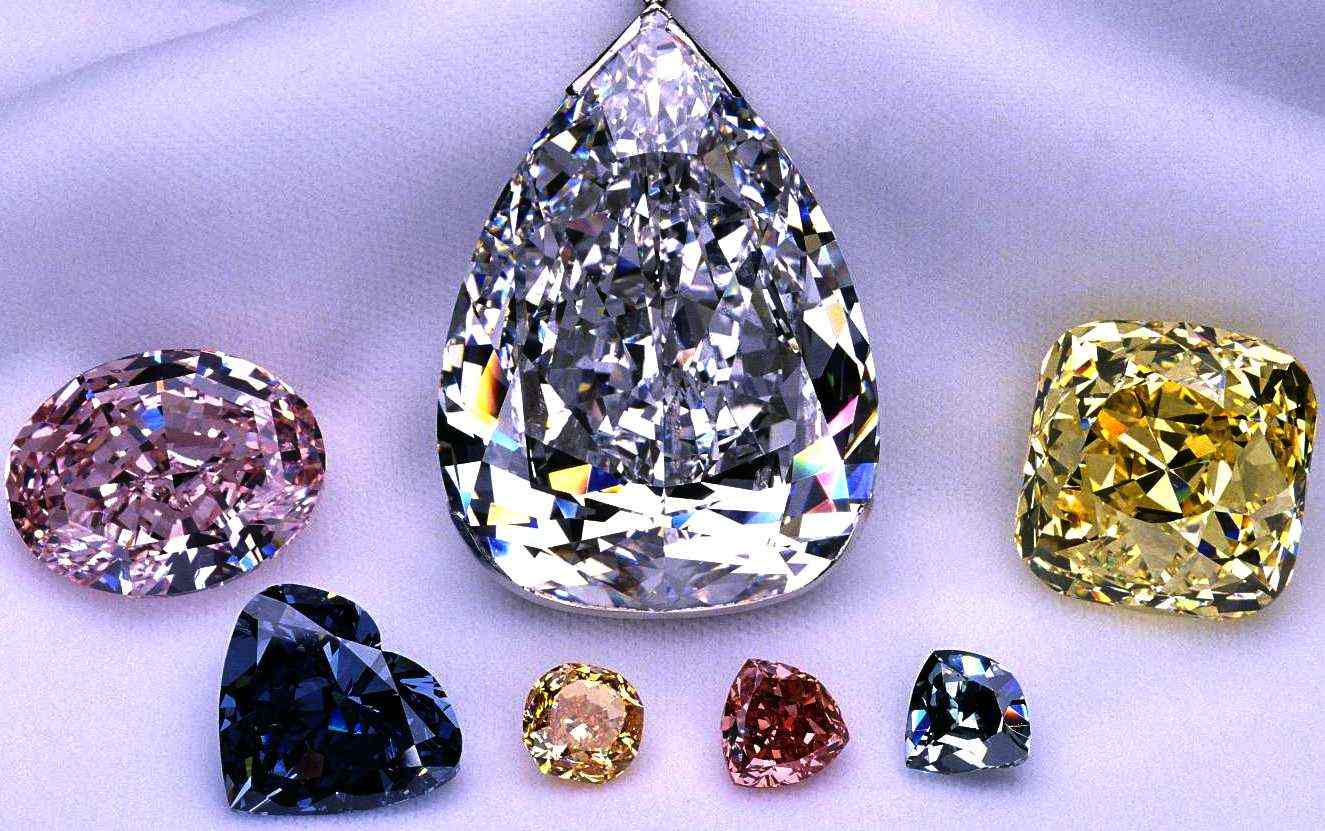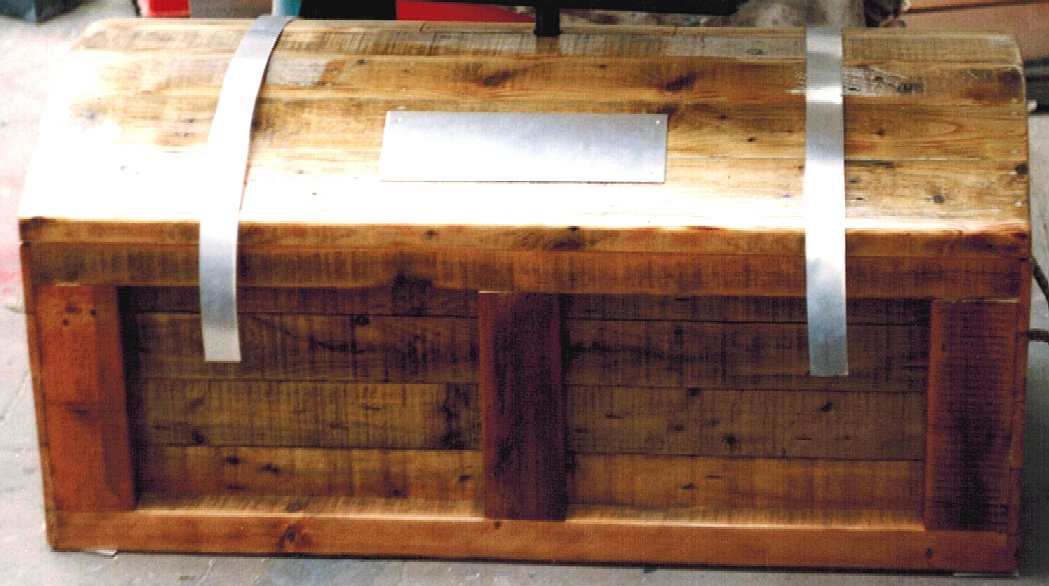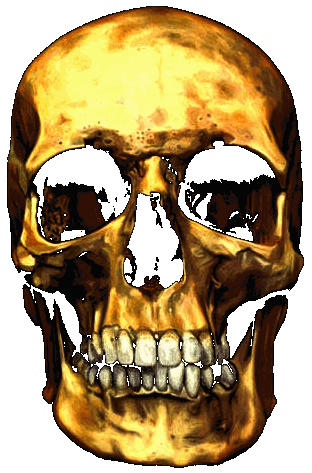|
TREASURE
|
|
Treasure (from Greek θησαυρός - thēsauros, meaning "treasure
store", romanized as thesaurus) is a concentration of riches, often one which is considered lost or forgotten until being rediscovered. Some jurisdictions legally define what constitutes treasure, such as in the British Treasure Act 1996.
Treasure - the Hope diamond
Searching for hidden treasure is a common theme in legend and fiction; real-life
treasure hunters also exist, and can seek lost wealth for a living.
Buried treasure
A buried treasure is an important part of the popular beliefs surrounding pirates. According to popular conception, pirates often buried their stolen fortunes in remote places, intending to return for them later (often with the use of treasure maps).
Map created by Robert Lewis Stevenson for Treasure Island
Treasure maps
A treasure map is a variation of a map to mark the location of buried treasure, a lost mine, a valuable secret or a hidden location. More common in fiction than in reality, "pirate treasure maps" are often depicted in works of fiction as hand drawn and containing arcane clues for the characters to follow. Regardless of the term's literary use, anything that meets the criterion of a "map" that describes the location of a "treasure" could appropriately be called a "treasure map."
A real life Treasure Island
Copper scroll
One of the earliest known instances of a document listing buried treasure is the copper scroll, which was recovered among the Dead Sea Scrolls near Qumran in 1952. Believed to have been written between 50 and 100 AD, the scroll contains a list of 63 locations with detailed directions pointing to hidden treasures of gold and silver. The following is an English translation of the opening lines of the Copper
Scroll:
Prehistoric gold treasure find
Pirates
Although buried pirate treasure is a favorite literary theme, there are very few documented cases of pirates actually burying treasure, and no documented cases of a historical pirate treasure
map. One documented case of buried treasure involved Francis Drake who buried Spanish gold and silver after raiding the train at Nombre de Dios -- after Drake went to find his ships, he returned six hours later and retrieved the loot and sailed for England. Drake did not create a
map. Another case in 1720 involved British Captain Stratton of the Prince Eugene who, after supposedly trading rum with pirates in the Caribbean, buried his
gold near the mouth of the Chesapeake Bay. One of his crew, Morgan Miles, turned him in to the authorities, and it is assumed the loot was recovered. In any case, Captain Stratton was not a pirate, and made no
map.
Treasure maps in fiction
Treasure maps have taken on numerous permutations in literature and film, such as the stereotypical tattered chart with an over-sized "X" (as in "X marks the spot") to denote the treasure's location, first made popular by Robert Louis Stevenson in Treasure Island (1883), a cryptic puzzle (in Edgar Allan Poe's "The Gold-Bug" (1843)), or a tattoo as seen in the video game The Space Adventure - Cobra: The Legendary Bandit (1991) and the film Waterworld (1995). Treasure maps in literature
The treasure map may serve several purposes as a plot device in works of fiction. Typically, it can be the motivation, causing the characters to begin a quest. It can be used to steer the plot (exposition), explaining in a concise way where the characters must go on their quest, or a map can be used to illustrate, at various points in the story, how far the quest has progressed.
Treasure maps in film
In the 1985 film The Goonies, an old treasure map leads to the secret stash of a legendary 17th century pirate, an almost exact imitation of Stevenson's plot in Treasure Island. In the 2004 film National Treasure, a treasure map becomes the source of the quest itself. In the 1994 comedy City Slickers 2: The Legend of Curly's Gold, a treasure map is made by criminals who are analogous to modern day pirates. In the film Waterworld, an extremely vague and cryptic treasure map has been tattooed on the back of the child character Enola. This map leads the characters to dry-land, which in the context of the film, is a treasure.
A replica wooden treasure chest.
Legends
The
list here is not exhaustive, there are for example many lost
mines; King Solomon's is a good one. Treasure troves
|
|
This website is Copyright © 1999 & 2025 Max Energy Limited, an environmental educational charity. The name Solar Navigator is a trademark. All rights reserved. All other trademarks are hereby acknowledged.
|
